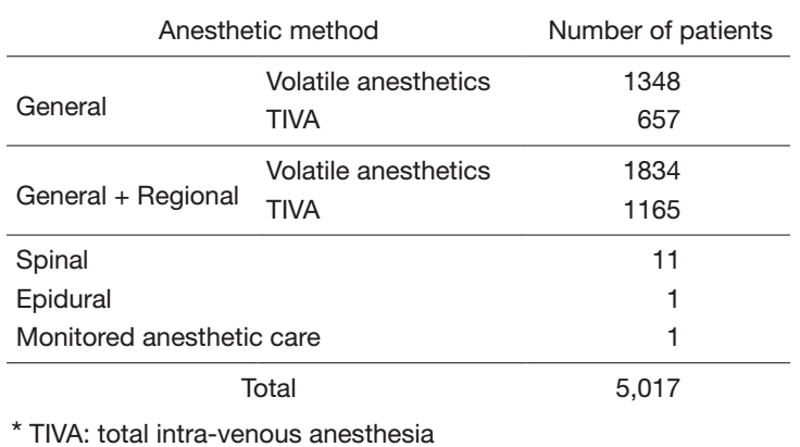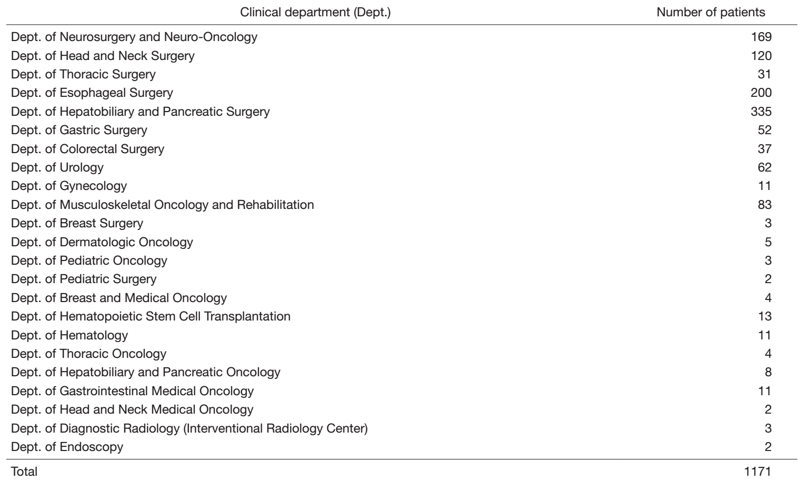Annual Report 2021
Department of Anesthesiology and Intensive Care Medicine
Tetsufumi Sato, Junya Matsumi, Rie Suzuki, Yousuke Kawaguchi, Yuri Ohishi, Yukiko Hikasa, Misako Shigematsu, Naohiro Shioji, Yutaro Asagoe, Yuki Enomoto, Yusuke Mizobuchi, Hiroaki Takahashi, Yuri Yabuki, Mizuho Kodama, Hironobu Tomita, Takahiro Naka, Eri Aoki, Akiko Ohgaku
Introduction
The Department of Anesthesiology and Intensive Care Medicine provides anesthesia and intensive care. Over 5000 anesthetic service cases are treated in 15 main operation rooms, 1 MRI operation room and 1 radioisotope operation room. Over 1000 intensive care cases are treated in 8 beds. Our Intensivists are also responsible for resuscitation services and advising about the management of critically-ill patients in wards.
The Team and What We Do
Our department is comprised of 19 staff anesthesiologists, of which 12 are certificated. We provide perioperative care to all patients who require general anesthesia. Our operating section performs approximately 5,000 anesthetic procedures a year, including general anesthesia with/without regional anesthesia, spinal anesthesia, epidural anesthesia, and monitored anesthetic care (Table 1). In addition, scheduled surgery patients are seen by the perioperative management center, including the Anesthesia Consulting Clinic.
Our department consists of 18 staff anesthesiologists, including 12 certificated anesthesiologists. We provide perioperative care to all patients who require general anesthesia and regional anesthesia. Our operating section performs approximately 5000 anesthetic procedures, including general anesthesia with/without epidural anesthesia, spinal anesthesia, epidural anesthesia, and monitored anesthetic care (Table 1). In addition, many patients are seen by the perioperative management center, including the Anesthesia Consulting Clinic.
Also, our intensive care unit is certificated by the Japanese Society of Intensive Care Medicine. It is managed as a closed system by some of our staff, including 7 certificated intensivists. About 1100 intensive care cases are treated in 8 beds (Table 2). Patients treated in intensive care units are mainly there for post-surgical indications. However, some of them are medical emergencies.
Table 1: Number of anesthesia cases classified by anesthetic
methods 

Research activities
One of our members researches opioids in the Division of Cancer Pathophysiology.
To understand the risk factors of severe adverse events in post-operative patients, especially aged patients, and to assess the effects of anesthetic management on cancer prognosis, epidemiological analyses were performed. Studies are being conducted to improve the current care for perioperative patients.
Education
We are providing clinical educational opportunities to staff members. We also provided research guidance through academic presentations to acquire certificated specialists. Residents in each department who rotated to the intensive care unit were instructed on the intensive care which should be known by cancer therapists through intensive care unit conferences twice a day. In addition, we provide clinical teaching practice to several medical students in Okayama University.
Table 2: Number of patients managed at intensive care unit,
classified by clinical department

Future Prospects
In terms of medical care, we will contribute to increasing the number of surgeries to quickly perform the necessary surgeries for cancer patients, and at the same time, strive to further improve safety through the creation of perioperative management systems.
In terms of clinical research, we will accumulate case studies centered on the content of retrospective research, examine prospective research, and strive to establish safe perioperative management and efficient intensive care management.
List of papers published in 2021
Journal
1. Mizobuchi Y, Miyano K, Manabe S, Uezono E, Komatsu A, Kuroda Y, Nonaka M, Matsuoka Y, Sato T, Uezono Y, Morimatsu H. Ketamine Improves Desensitization of µ-Opioid Receptors Induced by Repeated Treatment with Fentanyl but Not with Morphine. Biomolecules, 12:2022
2. Ishii K, Kuroda K, Tokura C, Michida M, Sugimoto K, Sato T, Ishikawa T, Hagioka S, Manabe N, Kurasako T, Goto T, Kimura M, Sunami K, Inoue K, Tsukiji T, Yasukawa T, Nogami S, Tsukioki M, Okabe D, Tanino M, Morimatsu H. Current status of delirium assessment tools in the intensive care unit: a prospective multicenter observational survey. Scientific reports, 12:2185, 2022t
